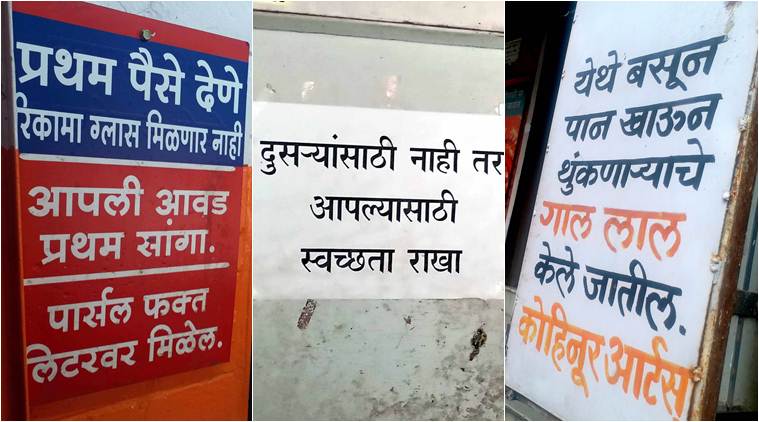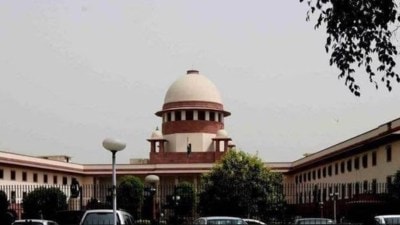Nasty, Brutal and Short: Don’t ignore the Puneri patya, the Marathi signboards all over Pune
They are rude and hilarious in equal measure, and never at a loss for words.
 It’s only words: Puneri patya or signboards are an important part of the city’s landscape. They might seem rude, but saves Punekars from repeating themselves.
It’s only words: Puneri patya or signboards are an important part of the city’s landscape. They might seem rude, but saves Punekars from repeating themselves.
“The contract of painting the walls of this building has not been handed over to anyone yet. Hence do not complete the job by spitting on the walls,” reads a curt sign at the front gate of a residential apartment in Pune’s Sadashiv Peth. A quintessential example of Puneri patya — the omnipresent Marathi signboards outside houses, shops, restaurants and most Puneri establishments have one thing in common — they are rude.
“You will usually see these signs in the old neighbourhoods, where the local Marathi population resides, especially in Brahmin-dominated neighbourhoods,” says Avinash Sangolekar, head of Marathi department, Savitribai Phule Pune University. From the parking patyas outside buildings or homes to the ones schooling customers, or those teaching people manners, there is no dearth of them. They appear in every facet of Puneri life. For example, this paati outside Kohinoor Arts in Navi Peth warns paan-spitting people: “Ithe basun, paan khaaun, thunknarayache gaal laal kete jaatil” which means “the cheeks of those who sit here and spit paan will be reddened”.
The Puneri attitude is celebrated by Marathi writer PuLa Deshpande who described it best in his essay, “Mumbaikar, Punekar ki Nagpurkar”: “Puneri Marathi is about maximising insult in the minimum possible words.”
There isn’t really any record of where, when and by whom this trend was started. But if Sudhir Gadgil, probably the most well-known Marathi compere and host, is to be believed, celebrated lawyer and former deputy mayor of the city, the late PB Jog, was the most popular proponent of Puneri patya. “He was popular and yet scathing in his comments. Outside his house on Tilak road, he had put up 42 patya,” recalls Gadgil.
One of the famous patya outside Jog’s house read: “Mazhykade turtaas lagnyacha mulga athva mulgi nahi, tevha var vadhu pityana majhya gharchi bel vajuvu naye” (At the moment, I don’t have a boy or girl of marriageable age, hence fathers of wannabe bride/grooms should not ring the bell of my house.”)
The tone was set by Jog — a trend only gleefully carried forward by Punekars. Marathi filmmaker Srinivas Bhanage, who had featured a segment on Puneri signboards in his 1996 TV series for Doordarshan, Puneri Punekar, recalls a few: “Joshi kuthe rahatat, he sangnyasathi aahmi ithe rahat nahi” (Where does Joshi live? We don’t live here to answer this question); “Ekda bell vajavlyas jar uttar milaada nahi tar amhala tumchyashi bolaycha nahi, he samjha ani nigha” (If the bell isn’t answered after ringing once, understand that we don’t wish to meet you and leave). “How many times will people answer the same question? So they started using this as a means for communication. But for how long will they remain, is for time to tell,” says Bhanage.
Photos




- 01
- 02
- 03
- 04
- 05




































